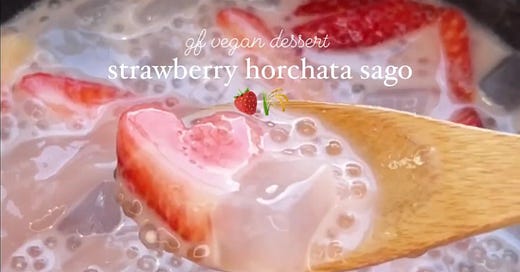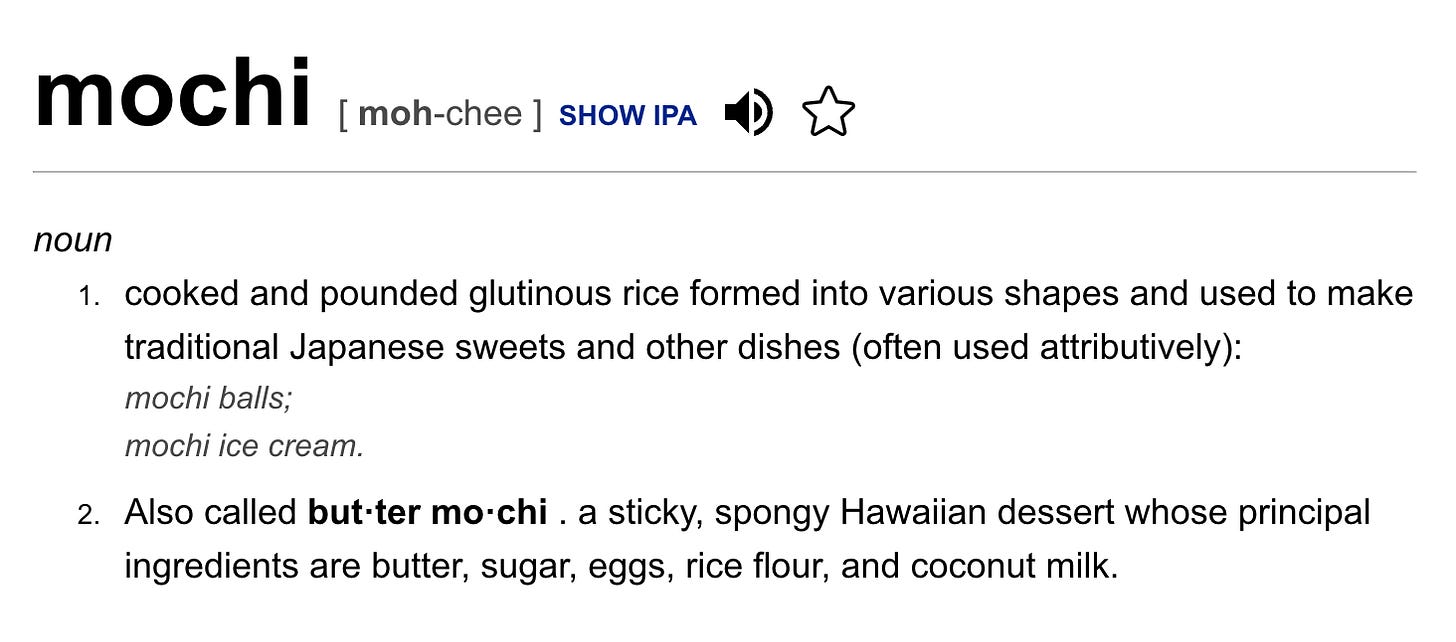kat's dessert of the week: strawberry mochi and sago horchata sweet soup and a reflection on fusion vs cultural appropriation in food
horchata is a simple, refreshing, and nutritious drink; it forms the base of my strawberry sago dessert here. a quick reflection on what makes a recipe fantastically fusion and culturally appreciative
scroll down for the full recipe
Dear friend,
Yesterday, the little girl next door (A) gifted me a cat-ear headband. She has the same one, and I told her how much I loved it. Of course, she told her mom, and her mom, who happens to be one of my best friends, bought the headband for me.
The little girl and her mom always give me gifts; in return, I make them sweets and food. A came over to play with my son P. For a snack, I made them a fun pink sweet soup, my dessert of the week.
It’s hard to name this dessert; so many things are happening in one bowl.
The base sweet soup is a strawberry horchata made with rice, cinnamon, sweetened condensed milk, miso, strawberry milk, strawberries, and vanilla extract.
Then I have sago pearls, nata de coco, strawberries cut into hearts, and a quick Taiwanese milk mochi.
The resulting dessert is a mega fusion and an explosion of textures: chewy, crispy, soft, and tender… cornflakes would add a great crunch, but I had crushed ice, so… crunchy!
I imagine a lot of people will be angry with this recipe. They will say that the “mochi” I made is not mochi and that horchata doesn’t belong in an Asian sweet soup. I’ve created a dessert from my heart to thank the little girl for her gift, for one and two, to fuse recipes I love and appreciate.
I make sure to credit the culture from which each component is derived. (Horchata, interestingly, originated in North Africa.)
“Historians believe horchata originally came from North Africa and was brought to Southern Spain with the Moors, where it became a popular beverage. It is a popular drink in Mexico.”
Mochi here, I acknowledge, is not the traditional rice cake that one finds pounded by hand in Japan. I use mochi more so to describe the texture of the food. And milk mochi is a recent invention, a dessert found in Taiwan and across boba tea shops around the globe.
And being Cantonese-Vietnamese, I grew up on tong suis or sweet soups.
While the dessert looks simple, I assure you, a lot of thought was put into developing this recipe, albeit impromptu on a Sunday afternoon during a playdate.
Order a copy of my cookbook today or leave a review, please!
Cookbook 2 is coming 2024, stay tuned!
Recipe reel as reference:
Recipe:
For the Taiwanese milk mochi:
Keep reading with a 7-day free trial
Subscribe to Kathleen's Kitchen to keep reading this post and get 7 days of free access to the full post archives.







